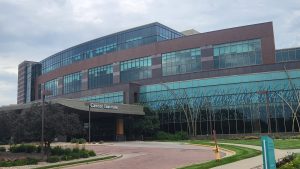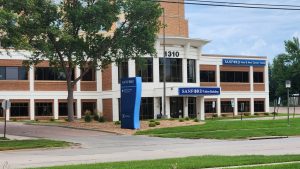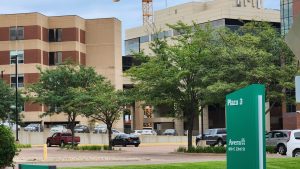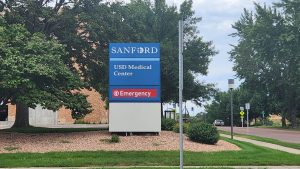The South Dakota Board of Regents made news last week with an announcement that many thought would never come: the state’s only medical school is moving from small-town Vermillion to Sioux Falls, the state’s population and health care hub. It is a rare example of state government breaking with tradition to do the right thing, choosing logic over sentiment.
A Better Fit for Students and Patients
For decades, medical students in South Dakota have split their time between Vermillion, home of the University of South Dakota, and Sioux Falls, where the state’s largest hospitals and clinics are located. The result has been a lot of wasted “windshield time.” Students spend hours on the road between classrooms and hospitals. That is inefficient, environmentally unfriendly, expensive and unfair to young people preparing for careers that will benefit the state.

Avera’s Cancer Institute in Sioux Falls
Consolidating medical education in Sioux Falls, home of the state’s two biggest health care systems, makes obvious sense. Here, students will be close to major hospitals, research facilities, and specialty practices. They will be trained in the settings where they are most likely to work after graduation, strengthening the pipeline of doctors for the state’s largest metro area.

Sanford Health is headquartered in Sioux Falls
The Small-Town Argument
Not everyone sees it this way. Community leaders in Vermillion and other small towns have reacted with dismay. They argue that institutions like a medical school prop up local economies and that relocating them only accelerates the long-term shift of people and opportunity away from rural South Dakota. The criticism is understandable, but it misses the point.
Government is not an economic development subsidy for communities that cannot sustain themselves. Businesses don’t put factories or retail outlets in locations that are inconvenient for customers. They build where the market is. If they don’t, they fail. You certainly aren’t likely to see Costco opening a big box store in Vermillion or Pierre anytime soon.

Avera Health is headquartered in Sioux Falls
State government should apply the same discipline when placing its facilities and services. Hospitals, courthouses, universities, and agencies should be where the people are, not where nostalgia dictates. And while we’re at it, perhaps we could reduce the number of those facilities as well to lighten the burden on taxpayers.
A Personal Perspective
I understand the pain of change. In the 1970s, I attended law school in Vermillion. It was a quiet place with few distractions, good for studying, but not a place most of us saw as a professional destination. After graduation, nearly all my classmates sought jobs in Sioux Falls or Rapid City, where the opportunities were. Perhaps one or two remained in the Vermillion area.
That story has repeated itself for decades. The reality is that Sioux Falls and Rapid City are the state’s magnets for health care, law, and business.

The USD Medical Center already in Sioux Falls
A Painful but Necessary Step
Relocating the medical school from Vermillion to Sioux Falls will be painful for some. Vermillion has long prided itself on being a college town, and losing the medical school will sting. But medical education should not be used as an economic development program for one community. It is a system meant to serve students, patients, and the state as a whole. By putting the medical school where it belongs, South Dakota’s leaders are proving they can put long-term logic ahead of short-term politics.
That is a lesson worth carrying forward. Governments at every level should resist the temptation to prop up struggling communities with facilities that would be more useful elsewhere. Taxpayers deserve better. Students and professionals deserve efficiency. And citizens deserve access to services where they actually live.
South Dakota has taken an important step in that direction. Let’s hope it is the first of many.
Totally agree with your thoughts on this topic, Joe.
Good morning Joe.
Thank you for your intelligent, spot-on political commentary. Your insight is a gift to your fellow South Dakotans. Please keep up the good work.
Greetings Joe
I think that is a great move. Sioux Falls has some of the best medical and research facilities in the nation. I believe it could attract more students to a community that could offer so many opportunities. You explained the reasoning behind the decision very clearly. Thanks from a Sioux Falls girl still in my heart!
Will the Law School and Business School follow?
Well done Joe!!!
well done joe
Spot on Joe. Kudos to the decision makers!
The number of students in M1 and M2 is not significant Rem the undergrad enrollment at USD. The media report indicated only 57 of the M1 & M2 current classes reside in Vermillion. The transition with be smooth. Yes, the next question is the Law School, the issue around these 2 professional schools is uniquely different than the undergrad population. Always good to think through options, assessing costs and benefits.